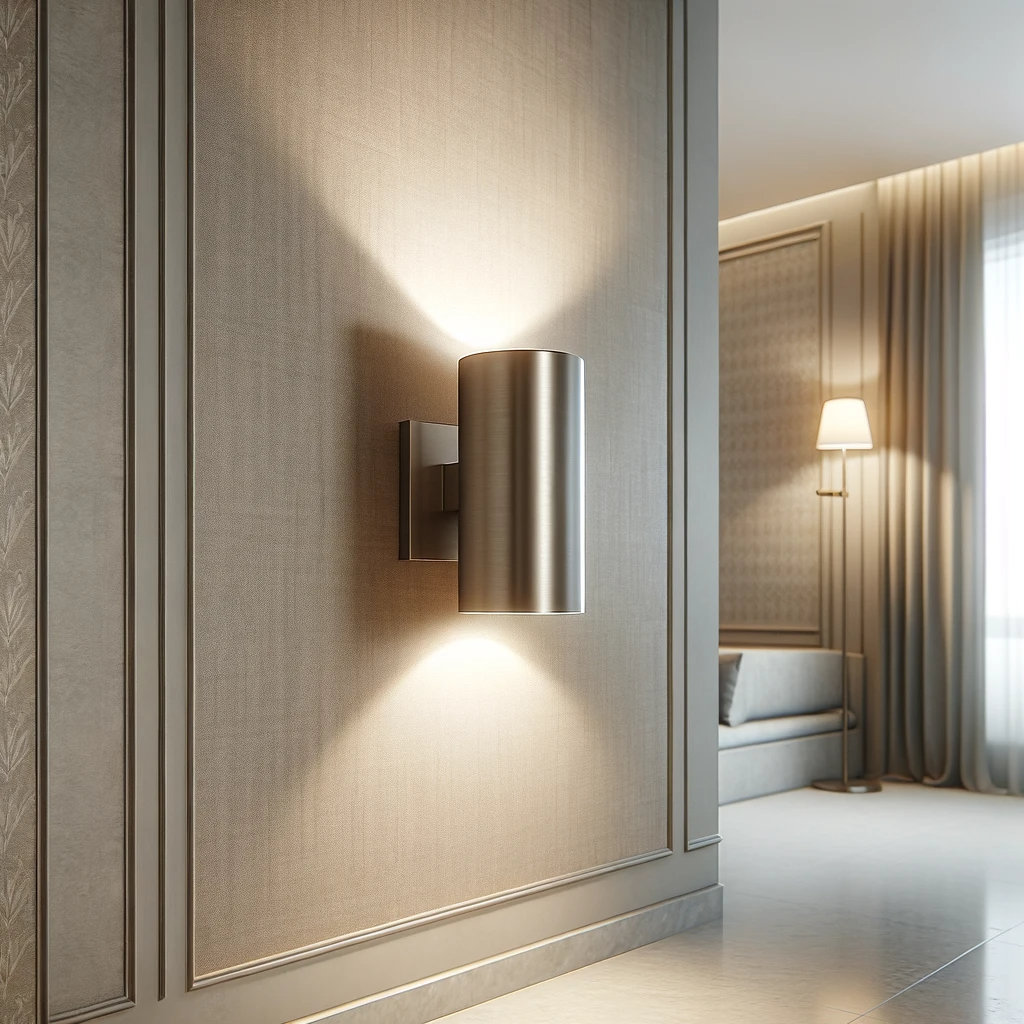How to Install a Wall Light?
How to Install a Wall Light: A Step-by-Step Guide
Installing a wall light is a fairly simple task that even a DIY enthusiast can handle. Whether you choose a designer wall light, an LED wall light, or an outdoor wall light, the process is similar. However, it is crucial to take certain steps to ensure a safe and efficient installation. In this article, we will guide you through the steps for installing a wall light correctly.

Step 1: Prepare the wall for your wall sconce
Before installing your new wall light, make sure the wall is prepared to accommodate the wall fixture. Check that the wall is clean, dry, and that all surfaces are smooth and free of stains. If the wall is damaged, you will need to make the necessary repairs before installing your designer wall light.
Step 2: Prepare your wall light
Once the wall is ready, it's time to prepare your wall light. Whether it's a wall lamp, an LED wall light, or a designer wall light, make sure all components are included and all wires are properly connected. It's also essential to check that the wall light is compatible with the type of wall you plan to install it on.
Step 3: Attach the wall light
The installation of your wall light can now begin. Use screws and anchors to secure the wall light to the wall, ensuring it is securely fastened and does not move. Whether you are installing an outdoor wall light or a designer wall light, safety is essential.

Step 4: Connect the wall light to the power supply
Once the wall light is installed, it's time to connect it to the power supply. Make sure the wires are properly connected and that the light is receiving power. Once the wall light is connected, you can turn it on to check that it's working properly.
Step 5: Check the installation of the wall light
Once the wall light is installed and connected, it's crucial to check that everything is working properly. Make sure the wall light is securely attached to the wall, that all wires are properly connected, and that the light is compatible with the type of wall it's being installed on.In conclusion, installing a wall light, whether it's a designer wall light, an LED wall light, or an outdoor wall light, is a fairly simple task that can be completed by a DIY enthusiast. However, it's essential to take certain precautions to ensure the installation is safe and functions properly. By following the steps above, you'll be able to install your wall light safely and confidently.
FAQs
What is a wall light?
A wall sconce is a type of wall-mounted light fixture that illuminates upwards, downwards, or both. They can be used indoors or outdoors and are available in various styles, colors, and finishes to suit any decor.
What are the advantages of an LED wall light?
LED wall lights are energy-efficient, durable, and offer exceptional brightness. They also come in a variety of designs, from minimalist to decorative, and can create a warm and welcoming ambiance in any room.
What is the difference between a wall light and a ceiling light?
A wall sconce is mounted on the wall and provides indirect lighting, while a ceiling light is installed on the ceiling and provides more direct, general lighting. Both types of lighting fixtures can be used together for optimal lighting.
What is the difference between an outdoor wall light and an indoor wall light?
An outdoor wall light is designed to withstand the elements and illuminate outdoor spaces such as decks and walkways, while an indoor wall light is used to illuminate indoor spaces such as living rooms, bedrooms, and hallways. Outdoor wall lights generally have a higher Ingress Protection (IP) rating than indoor wall lights.
How do I choose the right type of bulb for my wall light?
Choosing the right bulb depends on the base type of your wall sconce and the type of light you want. LED bulbs are energy-efficient and long-lasting, while incandescent bulbs provide a soft, warm light. Be sure to check the maximum wattage your sconce can handle before purchasing a bulb.
Do all wall lights have a built-in switch?
No, not all wall sconces have a built-in switch. Some are designed to be turned on and off with a wall switch, while others have a switch on the light fixture itself. Be sure to check this before purchasing your wall sconce.
How to install a wall light?
Installing a wall sconce involves preparing the wall, preparing the sconce, securing the sconce to the wall, connecting the sconce to the power supply, and checking the installation. While the process is fairly straightforward, it is recommended that you hire a professional if you are not comfortable with electrical work.
Can I use a wall light in my bathroom?
Yes, you can use a wall light in your bathroom, but make sure it's designed for this purpose. Bathroom wall lights should have an appropriate Ingress Protection (IP) rating to withstand moisture and splashes of water.
Where is the best location to install a wall light?
The best location for a wall sconce depends on its purpose. For general lighting, wall sconces are typically installed about 1.8 meters above the floor. If you're using the sconce as a reading light, it should be installed at a height that allows you to read comfortably.
How do I adjust the brightness of my wall light?
If you want to adjust the brightness of your wall sconce, you can use a dimmable bulb and a compatible dimmer switch. Be sure to check the compatibility of the bulb and dimmer before making your purchase.











Leave a comment